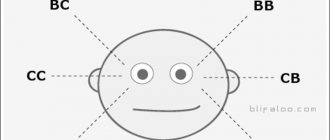A functional state is a relatively stable structure of the means of activity actualized by a subject in a specific situation, which reflects the specificity of the mechanisms for regulating activity that have developed at the current moment in time and determines the effectiveness of solving work problems. This definition is used in the structural-integrative approach in psychology.
There is also a physiological interpretation of the concept of FS, in which it is considered as a state of the body, a separate physiological system, organ, tissue.
The study of the functional states of a working person is one of the central problems of the complex of sciences about labor activity, primarily labor psychology, engineering psychology and ergonomics.
History of the concept
The concept of a functional state originally arose and was developed in physiology. The main content of the first studies was the analysis of the mobilization capabilities and energy costs of the working organism.
At the same time, the analysis of the functional state of a working person in conditions of real activity is not limited only to physiological concepts and involves the development of psychological and socio-psychological aspects of this issue. Similar studies were carried out by A.A. Ukhtomsky. in Russia and G. Selye abroad.
Since the 1970s. Active research into functional states began. Among the first researchers who made a significant contribution to their development are the names of the largest psychologists of that time - F. Galton, E. Kraepelin, G. Ebbinghaus, A. Binet and others.
Basic approaches to FS analysis
As of 2015, four main groups of approaches to the study of FS can be distinguished.
Energy approach
FS is considered as a characteristic of the course of life support processes at the level of both individual physiological systems and the entire organism as a whole, in terms of the intensity and efficiency of energy expenditure on the part of physiological systems involved in solving behavioral problems. Research focuses on the analysis of the basic physiological mechanisms that ensure the occurrence of metabolic, neurohumoral, cerebral, autonomic and other processes in different conditions and modes of activity. The main goal of these studies was to find physiological correlates that would allow different types of psychophysiological states to be differentiated according to specific “activation patterns”, i.e. according to stable configurations of physiological reactions characteristic of different situations.
Phenomenological approach
FS is considered as a characteristic of the experience experienced by a person, including in an affectively colored form (feelings, emotions, experiences, etc.), presented in observations or introspection. In studies carried out within the framework of the phenomenological approach, the multidimensional nature of the manifestations of a mental state is substantiated and productive attempts are made to identify structural and functional connections between reflexive assessments of the state and the “launch” of behavioral programs corresponding to the characteristics of the subjective attitude or “vision of oneself” in a particular situation.
Behavioral approach
FS is considered as a characteristic of the results and methods of performing activities / solving problems at the level of externally presented behavior. An important direction within the framework of this approach is research into the qualitative side of the implementation of behavioral acts, changes in which lead to shifts in performance. The development of the behavioral approach also stimulated the emergence of more advanced behavioral and psychometric methods for assessing FS - test tests simulating the solution of certain fragments of behavioral tasks.
A complex approach
FS is considered as a holistic multicomponent characteristic of the manifestations of the studied mental phenomena, including states. Based on numerous studies conducted within the framework of an integrated approach, new theoretical constructs and methodological tools were developed, which prepared the basis for the implementation of the principles of system analysis of FS. However, in general, the integrated approach serves primarily as a strategy for collecting data on the multilevel manifestations of FS, but does not provide a sound conceptual framework for analyzing, integrating, and meaningfully interpreting these multidimensional data. The solution of practical problems related to the full diagnostics and optimization of the PS as a complex system object was justified in the development of a structural-integrative approach to the analysis of the PS.
Systems approach
FS is considered as a relatively stable (for a certain period of time) structure of internal means actualized by the subject, which characterizes the mechanisms of activity regulation that have developed in a particular situation and determines the effectiveness of solving behavioral problems. It is important to emphasize that in this case, FS is considered as the result of a person’s inclusion in the process of active and purposeful activity, the leading role in which is played by the employee’s motivational attitudes and the internal resources available to him in a specific period of time to complete the tasks being solved.
Basic concepts of the systems approach
- A system is a set of interacting elementary structures/processes, united into a whole by solving a common task that cannot be performed by any of its components separately.
- The system-forming factor is the main factor that integrates the work of different-quality elements into a single whole and determines its dynamics over time.
NECPAL rating scale
Might a patient need palliative care if the “yes” answers are less than three? The NECPAL scale says it can.
NECPAL, short for Necesidades Paliativas, means “palliative needs” in Spanish. This is a technique for identifying patients who require any form of palliative care as part of a general medical examination. The scale was developed by the Catalan Institute of Oncology in Spain, the Catalan Department of Health and with the participation of WHO.
The NECPAL scale also begins with a question about “surprise.” And the second question is: Has the patient or primary caregiver explicitly or implicitly expressed a request to receive palliative or symptomatic treatment only? Did he suggest limiting other therapy or avoiding specialized treatment?
This approach gives the patient the right to choose. Accordingly, if the doctor answered the question “about surprise”: “No, I will not be surprised,” and answered “Yes” to the second question, then we can say that the patient has indications for palliative care.
General classifications of FS
A. “Pragmatic” classifications (by type of external effects)
1. according to the degree of admissibility of the FS in terms of a) reliability of operation and b) “price of activity”:
Prohibited (unacceptable)
Allowed (acceptable)
2. according to the degree of accumulation of pathological effects:
Normal
Border
Pathological
B. “Substantive” classifications (by type of activity regulation mechanisms):
1. according to the degree of adequacy of the FS as a systemic response to the requirements of performing tasks in certain situational conditions:
dynamic mismatch states
state of adequate mobilization
2. according to the degree of accumulation of unfavorable symptoms:
Extensive states (main groups of qualitatively heterogeneous physical states: optimal states, fatigue, stress states, monotony, satiety, states of tension, states of flow, relaxation states, etc.)
Intense state (levels or degrees of development of one type of FS, reflect the dynamics in development and are presented in the form of scales: (1) Scale of wakefulness levels; (2) Stages of dynamics of performance states; (3) Stages of development of stress states, etc.)
Properties of PS as a systemic reaction
1. FS is the result of a restructuring in the work of functional systems that ensure the implementation of purposeful activities:
- FS cannot be considered outside the context of solving a specific problem, situation and conditions for the implementation of activities;
- The FS is not the background against which activities are carried out.
2. FS reflects changes in the structure of the “involved” functional system for supporting activities:
- Reconstruction of the main components in the functional system for supporting activities is required (highlighting professionally important functions and qualities);
- It is necessary to assess the manifestations (symptoms) of FS at all levels of the functional system for supporting activity (energetic, perceptual-cognitive, reflexive and behavioral).
3. FS is a systemic reaction formed under the influence of a complex of factors in the working environment:
- “Physical environment” (sanitary, hygienic and environmental conditions): microclimate;
- illumination;
- noise, vibration;
- Atmosphere pressure;
- radiation; harmful substances;
- infections and biological agents.
- general social factors;
- compliance of the individual with the professional role;
PPS scale
Decision-making on one or another tactic for managing a patient with an incurable progressive disease must be made from the standpoint of quality of life and predicted life expectancy. The PPS scale assesses the overall activity of patients in palliative care.
This is a good communication tool for doctors to quickly describe a patient's activity. At a meeting or conference, we do not say to each other: “The patient mainly lies down, he is active within the bed or bedside area” or “He can sit up on the bed with the help of, say, relatives or medical staff.” But we give an estimate as a percentage, according to the PPS scale. This is how doctors quickly understand each other.
The PPS evaluates a patient's mobility, activities, self-care, nutrition, and level of consciousness.
For example, the patient spends most of the day sitting or lying down, feels weak due to progressive disease, needs significant assistance while walking even short distances, while the patient is fully conscious, eats and drinks normally. Accordingly, his PPS will be 50%.
Or a quadriplegic patient who requires constant care may use a wheelchair to get around. He just lies there and cannot take care of himself. He needs total help with everything. The level of functional activity in this patient will be 30%.
You can download the PPS scale template from this link.
Diagnosis of FS
Types of the most common applied diagnostic tasks for assessing FS:
- Assessment of the reliability of human activity directly in the process of work (diagnosis of the current FS).
- Assessment of a specialist’s readiness to perform activities in a specific situation (short-term forecast of FS development).
- Assessment of a person’s potential to reliably/successfully cope with professional tasks (long-term forecast in terms of professional suitability).
- Assessment of threatening factors for the health/well-being of workers employed in certain professional positions (long-term prognosis in terms of professional longevity, preservation of working capacity).
- Examination of “difficult situations”, accidents, accidents (assessment of the role of the “human factor” in the occurrence of various incidents).
FS assessment methods (data collection):
- Physiological Biochemical
- Assessment of vegetative changes
- Electrophysiological
- Indirect assessment of physiological manifestations
- Objective psychometric tests (cognitive, performance)
- Quantitative methods (labor productivity assessment, analysis of activity products, timing, etc.)
Tema5 – Page 2
The consequence of a state of tension can be “emotional burnout syndrome.” There are various definitions of “burnout”, but in its most general form it is considered as a long-term stress reaction, or a syndrome that occurs as a result of prolonged professional stress of moderate intensity. The burnout syndrome is most typical for representatives of communication professions, including all categories of executives and managers performing personnel management functions. Many studies show that emotionally difficult or tense relationships in the person-to-person system play a key role in burnout syndrome. The burnout syndrome manifests itself most clearly in cases where communications are burdened with emotional intensity or cognitive complexity. The likelihood of developing a burnout problem increases as the frequency and duration of contact of a disruptive or irritable nature increases. The main components of the syndrome are:
Emotional exhaustion
is considered as the main component of “professional burnout” and manifests itself in a reduced emotional background, indifference or emotional oversaturation.
The second component is depersonalization
- manifests itself in the deformation of relationships with other people. In some cases, this may be an increase in dependence on others, in others - an increase in negativism, cynicism of attitudes and feelings towards recipients: patients, clients, subordinates, etc.
The third component of “burnout” is a reduction in personal achievements
- can manifest itself either in a tendency towards a negative assessment of oneself, one’s professional achievements and successes, negativism regarding official merits and opportunities, or in a reduction of one’s own dignity, limiting one’s capabilities, and responsibilities towards others.
If you are the author of this text and believe that your copyright is being violated or do not want the text to be published on the ForPsy.ru website, send a link to the article and a removal request:
Main types of FS
Various authors identify 4 main types of functional states.
- Fatigue
- Monotony
- Mental satiety
- Tension/stress
Fatigue
A class of conditions characterized by exhaustion and incoordination in the course of the main processes and functions that implement activity. They develop due to the duration and intensity of exposure to workloads, under the influence of which motivation to complete work and rest is formed.
Monotony
States of reduced conscious control over the performance of activities that arise in situations of monotonous work with frequent repetition of stereotypical actions in an impoverished external environment.
Accompanied by feelings of boredom/irresistible drowsiness and the formation of motivation to change activities.
Mental satiety
States of rejection of activities that are too simple and subjectively uninteresting or meaningless, leading to suspension of work or replacement of tasks performed.
Accompanied by a pronounced desire to stop working or add variety to a given stereotype of performance with a dominant motivation to refuse activities with a pronounced affective component.
Tension (stress)
States of increased mobilization of psychological and energetic resources that develop in response to an increase in the complexity or subjective significance of an activity.
Accompanied by a pronounced change in emotional experiences, reflecting the dominance of motivation to overcome/eliminate difficulties, which can be realized in both productive (eu-stress) and destructive forms (distress).
PPI scale
This is the simplest tool for assessing a patient's life prognosis. Initially, the PPI scale was created for oncology patients, but we also use it in somatic patients.
Five parameters are assessed:
- functional status (the same percentage on the PPS scale),
- oral food intake,
- swelling,
- shortness of breath at rest
- psychomotor agitation (delirium).
If the PPI is more than six, then the patient's life expectancy is less than three weeks.
This method helps to resolve the issue of the advisability of continuing specialized treatment by oncologists, the advisability of applying a gastrostomy, as well as the need for palliative surgery or registration of the patient in a social institution, registration of the IPRA disability group for him.
The scale is the answer to the most common and painful question from relatives: “How long will my loved one live?” The data obtained on the scale makes it possible to prepare for the departure of a loved one.
You can download the PPI scale from this link.
Important Identifying the need for palliative care does not mean that specialized treatment should be stopped or treatment procedures should be limited if they improve the patient's quality of life. Palliative and curative care can be combined.
Health states
Performance is a person’s existing or potential ability to actualize physiological and psychological resources to perform purposeful activities.
“The Work Curve” by E. Kraepelin
During the activity, a change in the level of performance occurs, which is described using a performance curve. For the first time, after analyzing the so-called “Work Curve,” E. Kraepelin (1898) identified 4 main stages of performance according to performance indicators:
- working in
- optimal performance
- fatigue
- final impulse
Factors influencing the “work curve”:
- Duration of work
- Motivation (interest)
- Volitional effort
- addictive
- Education
Dynamics of performance states during labor
"Before the start" of work
- The state of “operational rest” is the transition from drowsiness/passive wakefulness to an active state. Nonspecific readiness for activity (expectation/generalized orientation). Search activity - searching for a subject of activity, “objectification” of a need.
- “Mobilization” is preparation for performing a specific activity, solving a certain range of tasks. Formation of plan and implementation strategies. Updating the motivational attitude “to activity”, specifying the motive for activity.
Initial period of work
- “Primary reaction” is the transition to the external execution mode. “Clash” of different implementation plans: internal and external. The conflict stage of “launching” another functional system.
- “Hypermobilization” - testing and adjusting specific ways of performing activities, “tuning” to the real situation. Activation of procedural motives of activity.
During work (at the stage of high labor productivity)
- “Optimal compensation” is a flexible and effective regulation of the process of performing an activity. A synonymous term is “flow state.” Dominance of procedural motives of activity.
- “Subcompensation” - maintaining standard / high labor productivity by attracting additional resources (compensatory funds). A synonymous term is “compensated fatigue.” Displacement of dominant motives to achieve results.
During work (with a pronounced drop in productivity)
- “Decompensation” is disorganization in the work of a functional system for supporting activities. A pronounced drop in performance (qualitative and quantitative) against the backdrop of a pronounced mobilization of additional resources. A change in the type of motivation—the dominance of motives for cessation of activity and “rest.”
- “Disruption of activity” is the collapse of the integral functioning of life support systems. Vital threat (to life, health). Complete refusal to work.
FS optimization methods
Objective methods for FS optimization:
- normalization of workloads;
- optimization of work and rest schedules;
- enrichment of labor content;
- elimination of environmentally harmful environmental factors;
- rational organization: jobs;
- work spaces, premises;
- means and instruments of labor;
“Direct” methods of influencing human PS:
- rest and restoration of resources;
- wellness treatments;
- physiotherapy;
- nutrition;
- pharmacology (psychopharmacology);
- additional external stimulation: functional music;
- color and light effects;
- multimedia;










